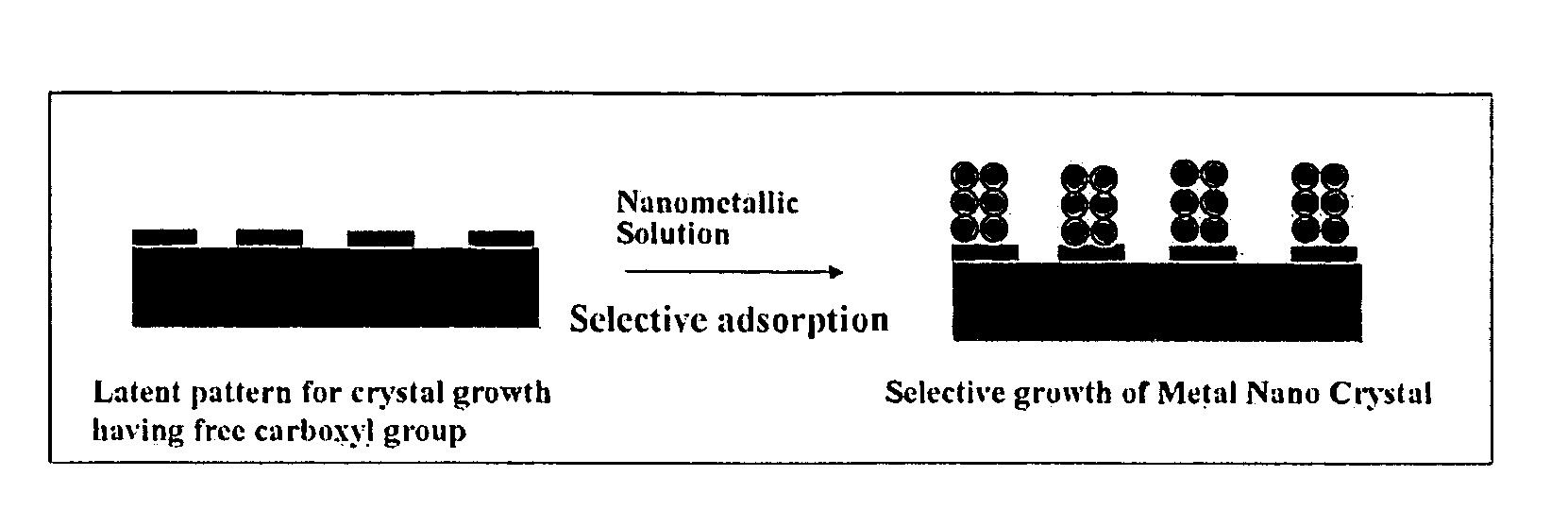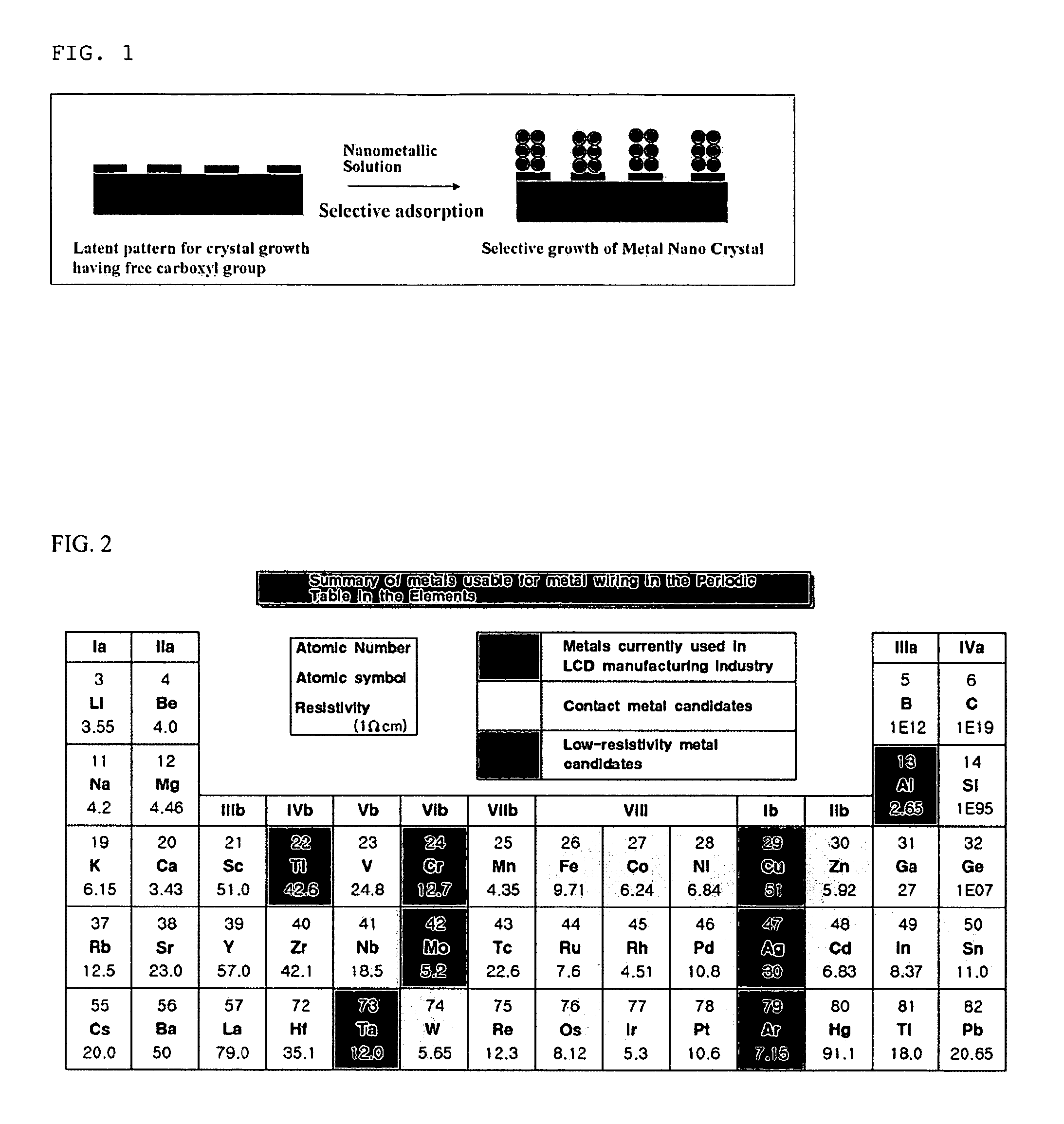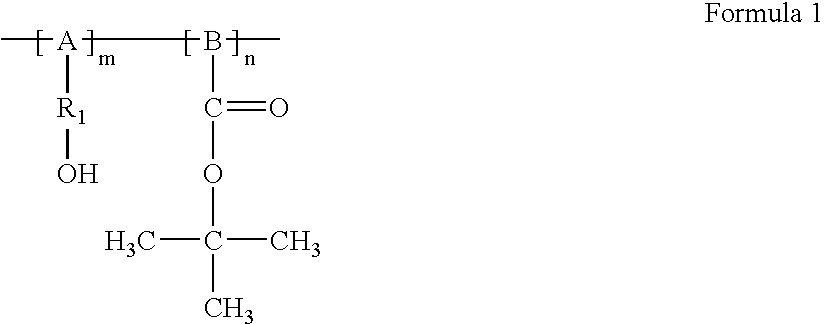Method for forming metal pattern by using metal nanocrystals
a metal pattern and nanocrystal technology, applied in the direction of resistive material coating, nuclear engineering, railway components, etc., can solve the problems of signal delay and distortion, significant increase in wiring resistance and capacitance, and limitation of productivity, and achieve the effect of superior metal wiring properties
- Summary
- Abstract
- Description
- Claims
- Application Information
AI Technical Summary
Benefits of technology
Problems solved by technology
Method used
Image
Examples
example 1
[0048]1–1) Formation of Latent Pattern for Crystal Growth Having Carboxyl Group
[0049]1 g of poly(t-butylmethacrylate-co-2-hydroxyethylmethacrylate) copolymer (Formula 3) was dissolved in 10 g of propylene glycol monomethyl ethyl acetate (PGMEA) as a solvent, and then the solution was spin-coated on a transparent polyester film. The coated film was dried at 100° C. for 10 minutes to prepare a photosensitive film having a thickness of about 100 nm. UV light was irradiated from a UV exposure system (Oriel, U.S.A) to the photosensitive film through a photomask on which a minute pattern was formed in the presence of the onium salt of Formula 2 as a photoacid generator. The exposed film was subjected to post exposure baking by heating to 120° C. for 10 minutes, and developed with pure water to form a latent pattern for crystal growth having an exposed free carboxyl group, on which a metal pattern could be formed.
[0050]
[0051]1-2) Formation of Metal Pattern Consisting of Nanocrystals;
[0052]...
example 2
[0053]The substrate prepared in Example 1-1) was dipped in a composition for metal crystal growth consisting of 16.9 g of AgNO3, 12.5 g of NH4OH, 1.2 g of C4H4O6KNa and 20 g of H2O for 10 minutes to grow crystals of a patterned metal wiring. The above procedure was repeated once to form a wiring pattern of silver. The conductivity of the patterned substrate is shown in Table 2. The conductivity was measured by the same method as in Example 1.
example 3
[0054]The substrate prepared in Example 1-1) was dipped in a composition for metal crystal growth consisting of 16.9 g of AgNO3, 12.5 g of NH4OH, 1.2 g of C4H4O6KNa and 40 g of H2O for one minute to grow crystals of a patterned metal wiring. The above procedure was repeated three times to form a wiring pattern of silver. The conductivity of the patterned substrate is shown in Table 2. The conductivity was measured by the same method as in Example 1.
PUM
 Login to View More
Login to View More Abstract
Description
Claims
Application Information
 Login to View More
Login to View More - R&D
- Intellectual Property
- Life Sciences
- Materials
- Tech Scout
- Unparalleled Data Quality
- Higher Quality Content
- 60% Fewer Hallucinations
Browse by: Latest US Patents, China's latest patents, Technical Efficacy Thesaurus, Application Domain, Technology Topic, Popular Technical Reports.
© 2025 PatSnap. All rights reserved.Legal|Privacy policy|Modern Slavery Act Transparency Statement|Sitemap|About US| Contact US: help@patsnap.com



